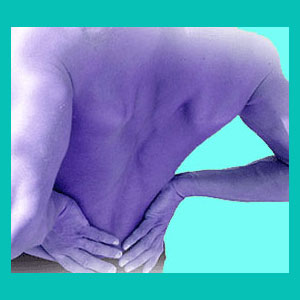
Degenerative disc disease exercises comprise a conservative treatment modality typically prescribed for patients diagnosed with mild to moderate DDD who are currently experiencing back pain. Exercise therapy is one of the most common forms of chronic pain treatment, although the reasoning behind it is often sketchy at best. Ask your doctor exactly what exercise therapy for DDD is supposed to do and how exactly it is supposed to do it and you will witness a real interesting show of “ums”, “ahs” and “you knows”. No doc, I don’t know. Do you?
This article will detail physical and exercise therapy for neck and back complaints blamed on disc deterioration. We will examine how exercise is supposed to help to resolve these issues and explain the surprising and often illogical efficacy enjoyed by many patients.
Exercise for Disc Disease
Degenerative disc disease is a normal spinal aging process that affects every adult on this planet to one extent or another. Most of us demonstrate mild to moderate disc desiccation by age 30 and many of use experience at least that amount much younger.
Exercises are prescribed in an effort to be proactive and keep physical functionality intact. Statistics show that patients who become frightened of activity often escalate symptomatically, so care providers advise their patients that exercise may help.
Typically patients are given a variety of disc exercises and stretches to do and doctors often cross their fingers and hope that these often illogical recommendations bring some measure of relief.
Degenerative Disc Disease Exercises Efficacy
There is no denying that exercise therapy does help many patients. However, the reason behind this is not what doctors or most disc pain sufferers believe it to be.
Remember, exercise will not help rehabilitate or repair degenerated discs. It will not decrease the size of herniated discs or help flat, dehydrated discs to regain their youthful characteristics. So, how do these exercises help provide pain relief? The answer is simple.
Exercise increases regional circulation and therefore combats the most common and least diagnosed form of chronic back pain… Ischemia. Oxygen deprivation back pain syndromes will almost always respond favorably, but temporarily, to exercise therapy, explaining why many patients feel better when moving around, but inevitably suffer a relapse of pain shortly after they cool down.
Degenerative Disc Disease Exercise Tips
I recommend exercise for everyone, with or without back pain. However, I do not generally recommend it as a cure for any type of pain, although it can be an effective symptomatic treatment. The idea of using exercise is illogical when prescribed for structural problems in the spine. However, when oxygen deprivation is theorized to be the source of pain, exercise becomes one of the many tools in the diagnostic process which can confirm the suspect causation and guide the patient towards a real cure.
If your spinally-motivated pain responds well, but temporarily, to exercise, there is a good chance that the diagnostic verdict is completely unsound. Think about the logic here. I bet your doctor didn’t tell you anything like this when you asked them about why they prescribe exercise for disc pain. Why not be kind and send them this article so that they can better answer the next patient who asks this same question.
Herniated Disc > Degenerative Disc Disease > Degenerative Disc Disease Exercises




